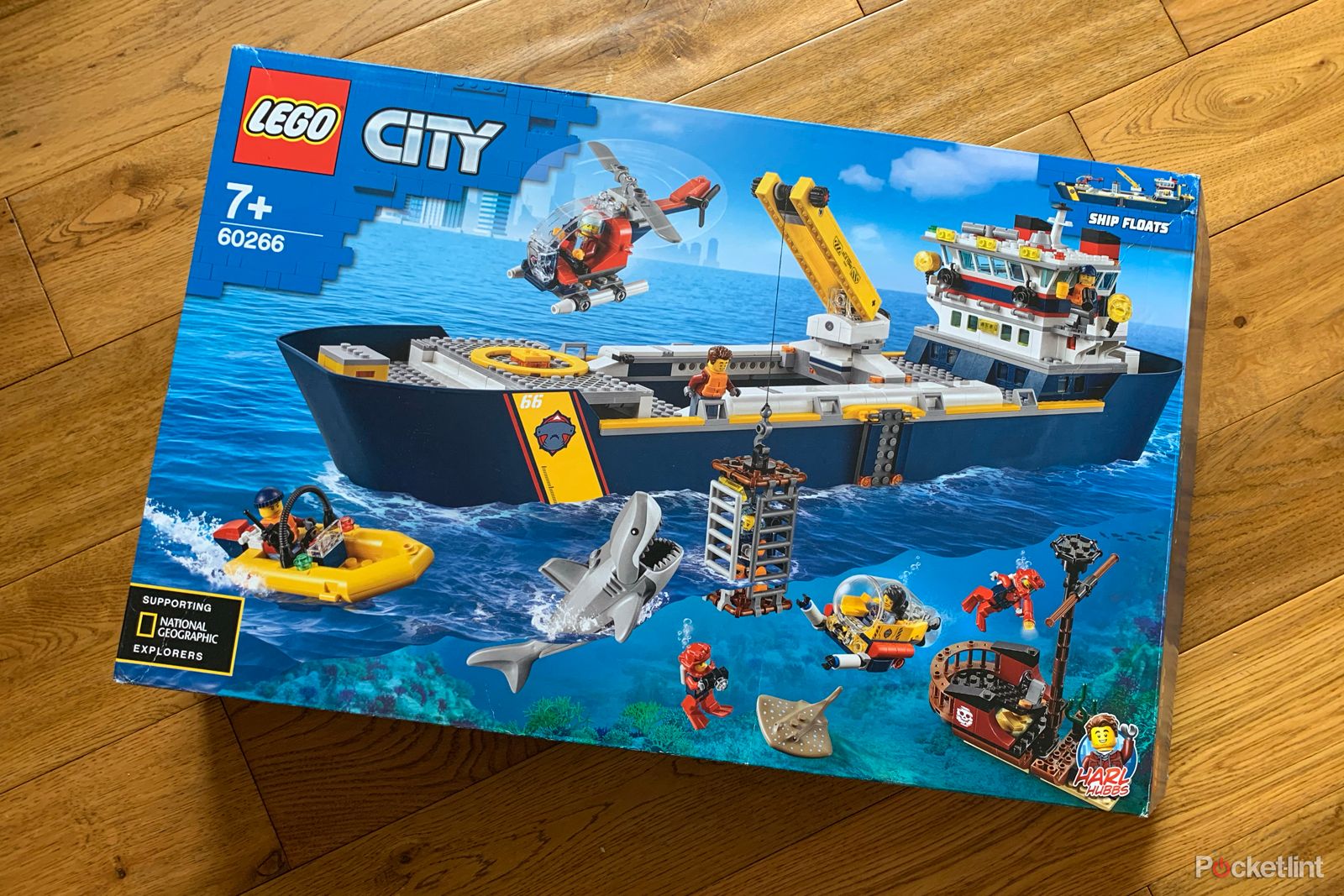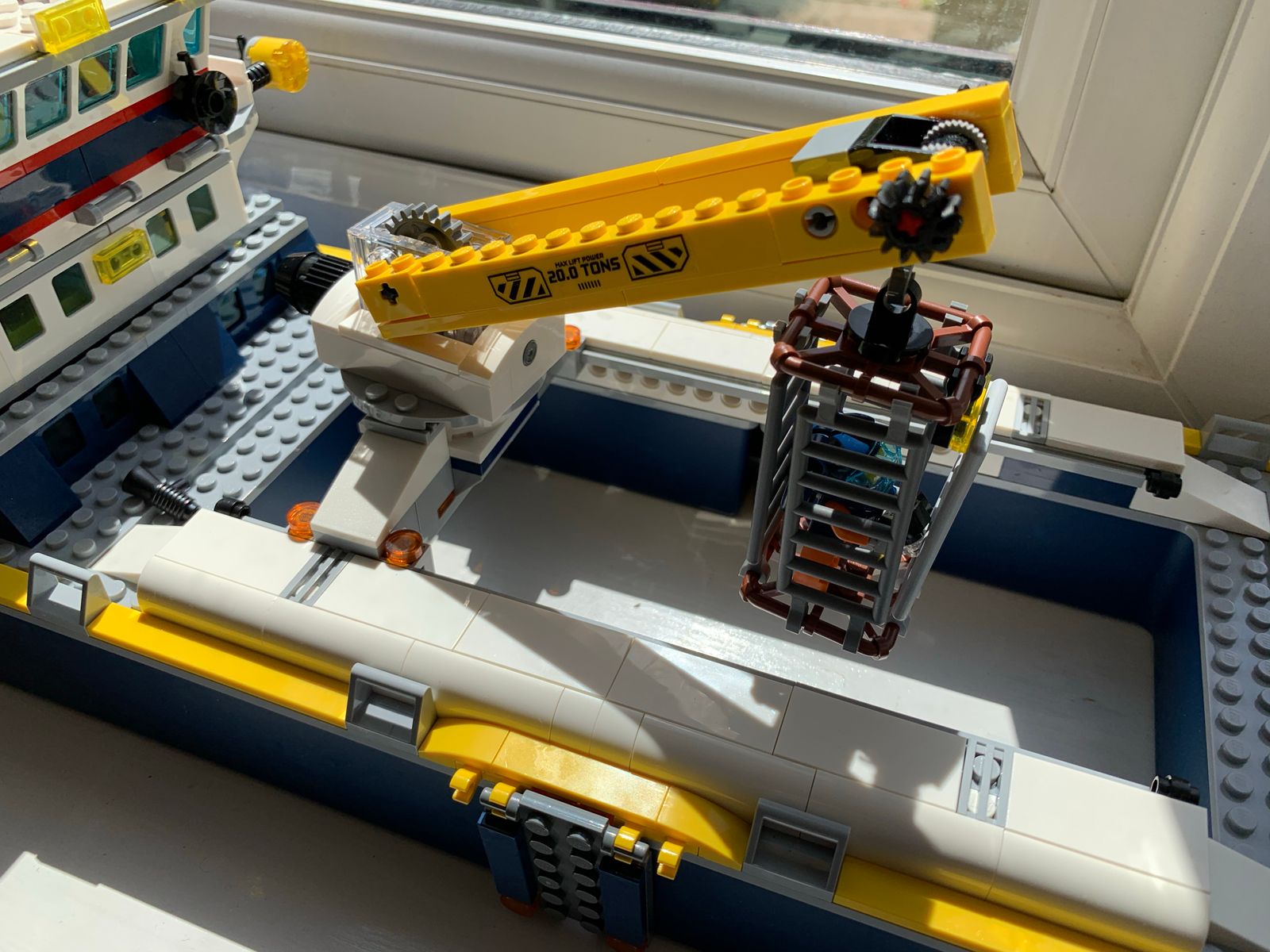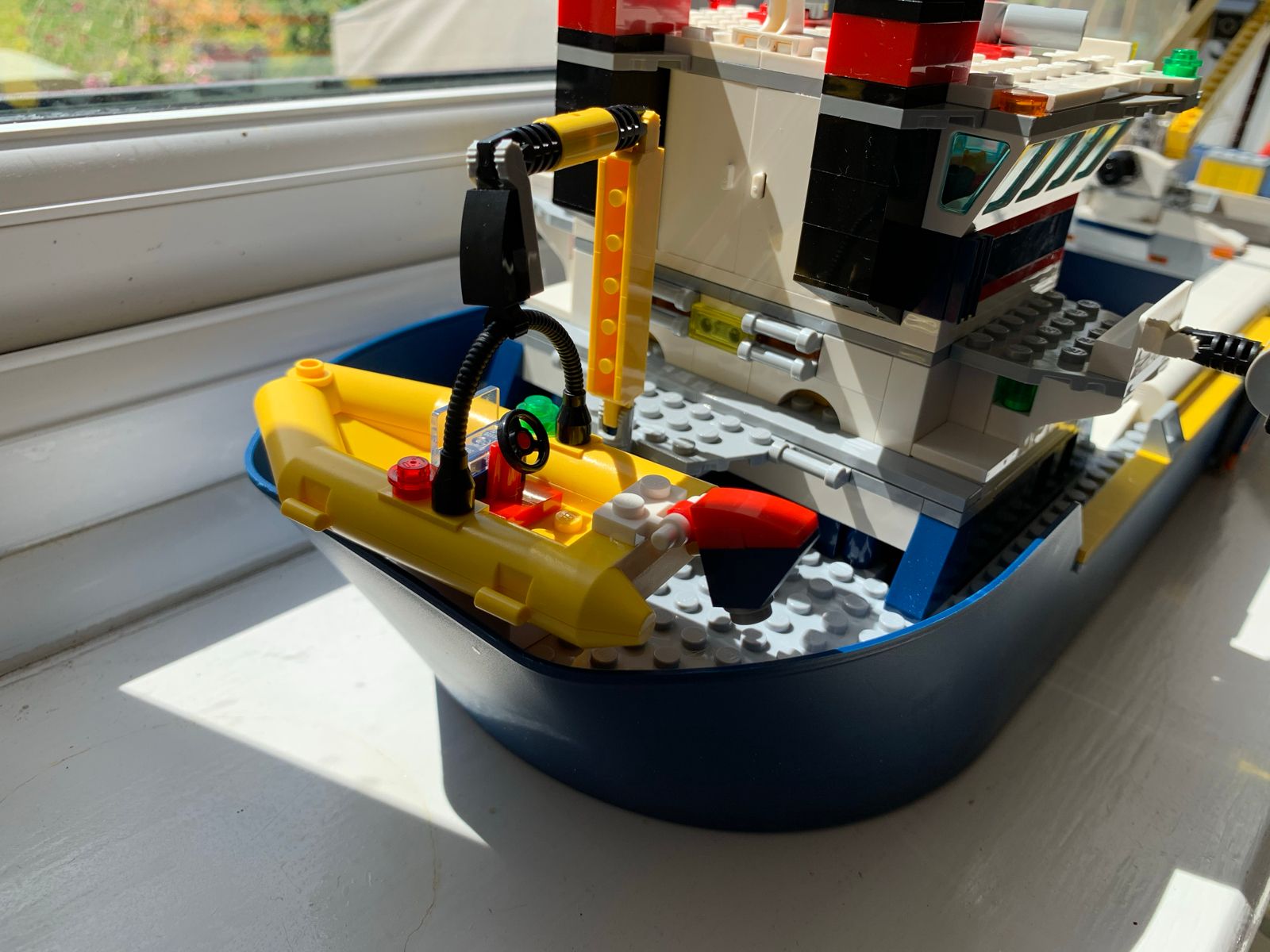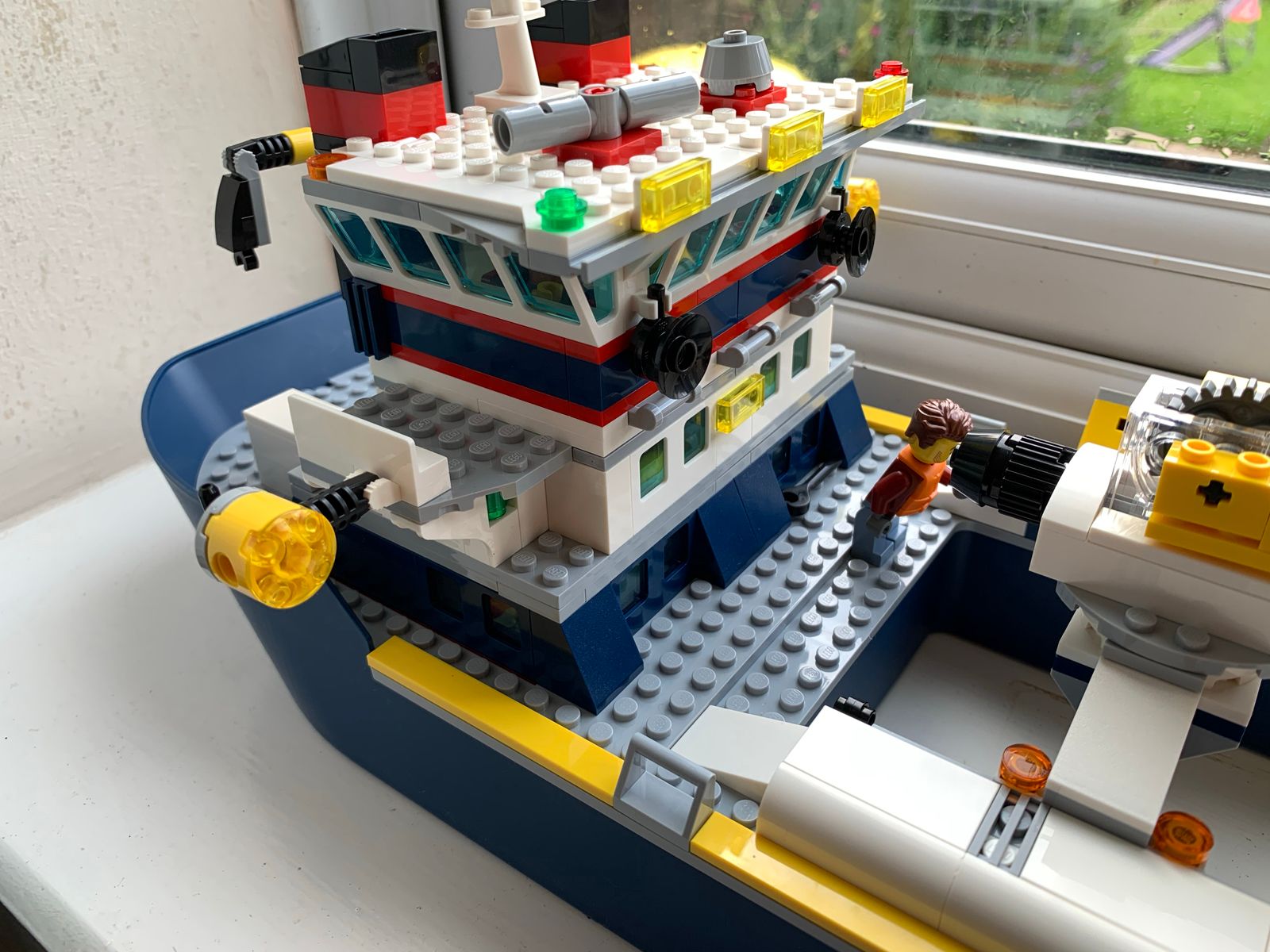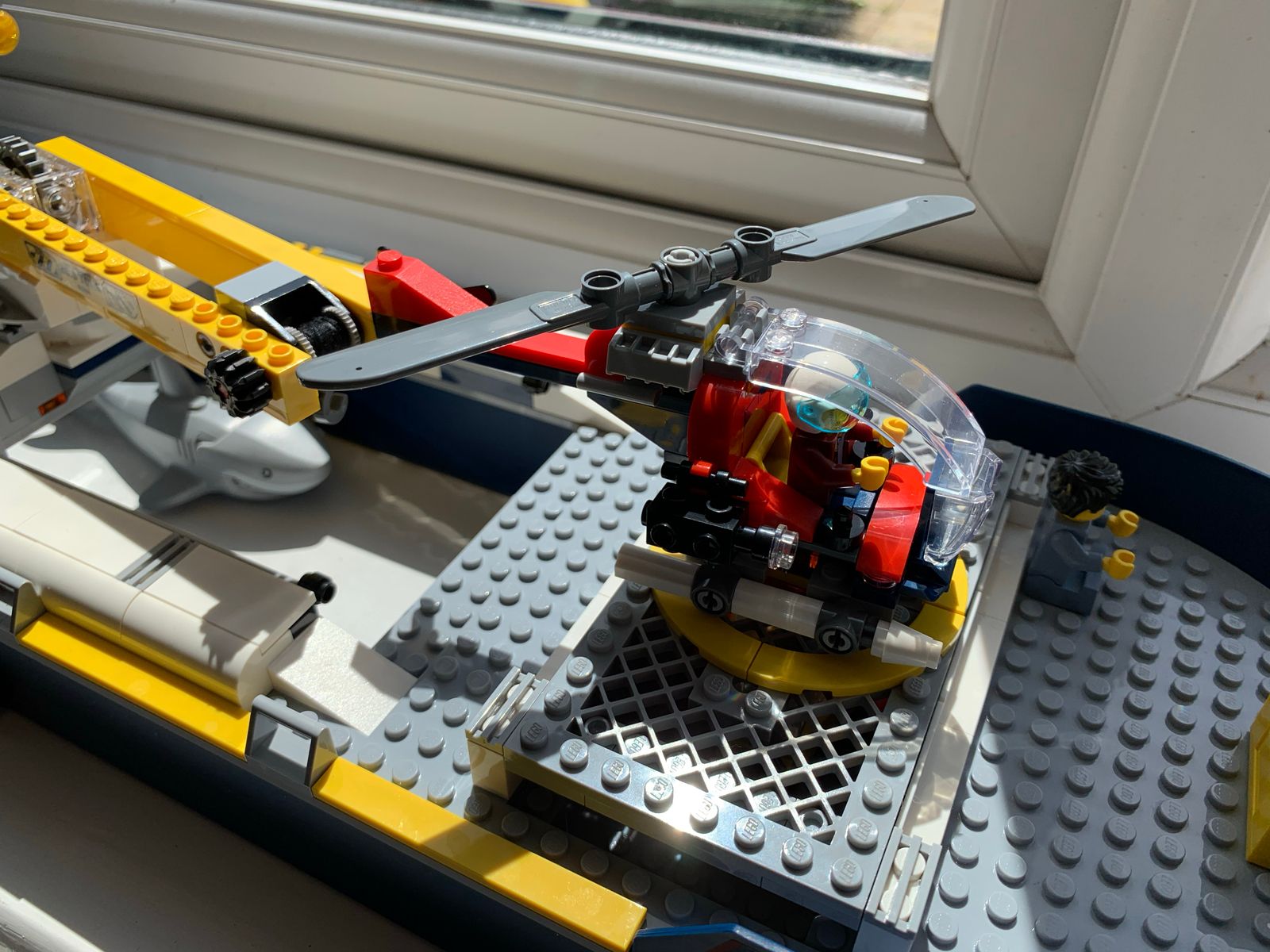Lego teamed up with National Geographic earlier this year to release some ocean explorer sets in the name of advancing awareness of ocean exploration and protection through play. We were lucky enough to build the biggest of these - the Ocean Exploration Ship (set 60266) that clocks in at 745 pieces.
It's expensive in terms of a piece-per-cent count because it comes with two huge halves of the ship that join together to make a 63cm-long vessel with space for helicopter, mini submarine, shark cage and a crane that can lift the sub and cage in and out of the water.
And the reason for those two large bits of the hull? This ship FLOATS. Yep, in true Lego style it's a floatable vessel that you can take in the bath or paddling pool. That adds to the play a great deal becausse you can lower the crane into the water just as the vessel would in real life.
The accommodation on the ship is also very detailed, with bridge at the top, beds in the middle and a laboratory with computers and so on sunk into the hull.
It's a clever set, even if a lot of the play value will be from the extra bits that also include a small ship wreck and a dinghy. There are eight minifigures with the set, too, so there's plenty of play value. The submarine sits underneath the helicopter pad at the front of the ship.
It's rated 7+ so we handed it to our six-year-old to toil over. Except he didn't - he smashed through it in a morning! The build takes place in three parts - first you build the helicopter and dinghy, then the shipwreck and finally the ship itself which obviously takes more time.
The ship is a really great build and is really flexible for play - it's an ideal standalone purchase if you don't have a lot of Lego (no, we don't know people like that either).
Here's our build diary in picture form - click through to see our build in progress.
Also in the series is the Ocean Exploration Base. Lego says funds raised from the sets will go towards grants for ocean exploration and conservation. "Caring for our planet is becoming ever more relevant to kids around the world," says Lego designer Ellen Bowley. "They are more committed to seeing positive environmental change than any previous generation, and their creativity will play a key role in finding solutions that will help better protect our wildlife."

